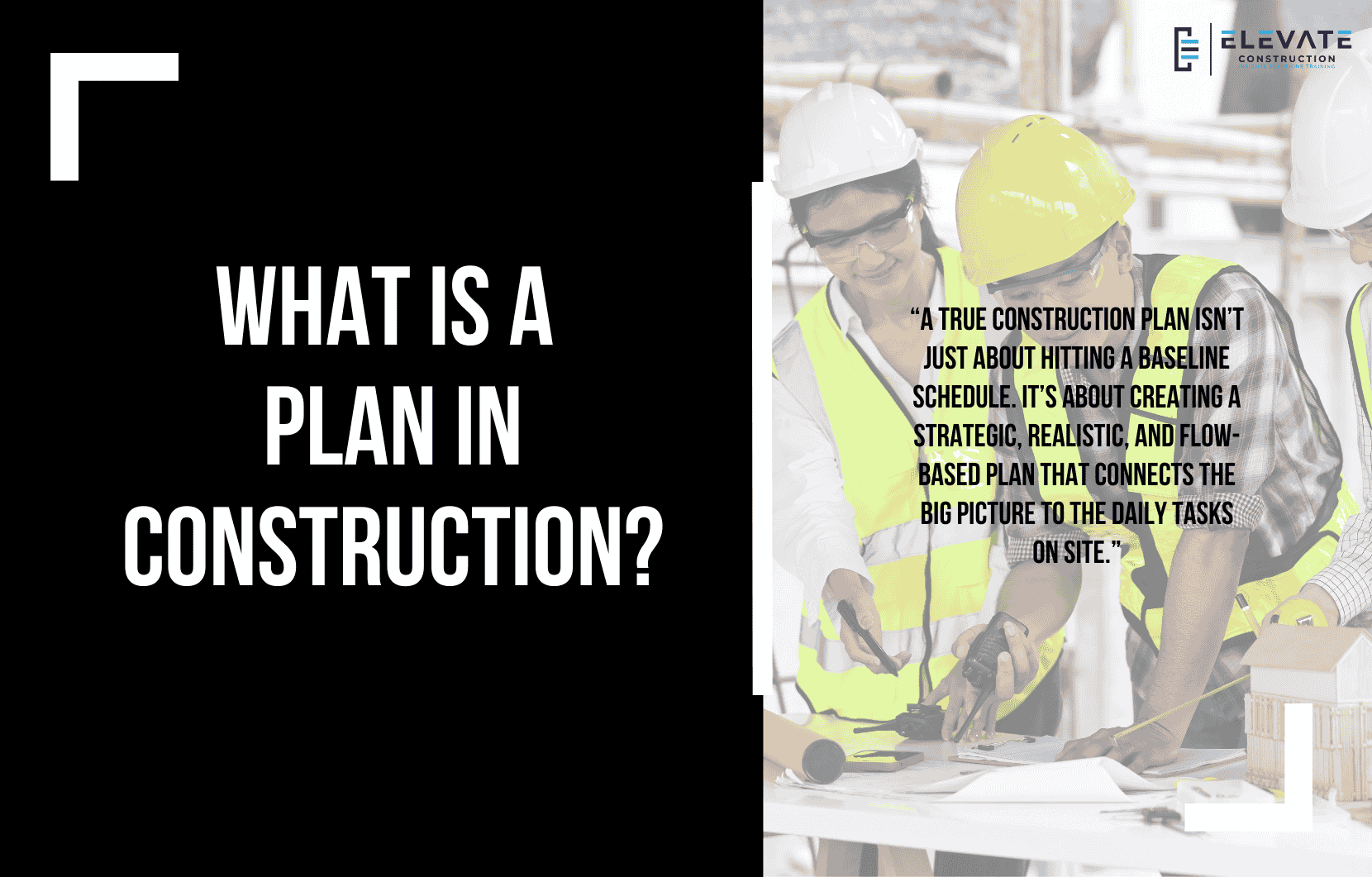What Is a Plan in Construction?
Introduction:
What exactly is a plan in construction? In this blog, we’ll look at both small and large projects and break down planning and scheduling from both a macro and micro perspective. The goal is to help you understand how to start, how to sequence, and how to approach projects with the right mindset.
If you’re looking for clarity on how to put all of this together, you’re in the right place.
Plan vs. Schedule:
There’s a key difference between a plan and a schedule:
- Schedule = The demand side of the equation (what the owner wants).
- Plan = What we can actually accomplish, given the constraints, while still working to meet customer demand.
This makes planning superior to scheduling. In fact, during my time at DPR, they used something called PSPP – Planning, Scheduling, Production Planning, which really highlighted the full scope of what a plan should be.
The Big Mistake:
A common mistake in construction is being forced into creating a baseline schedule far too quickly. Owners often demand a schedule within days or weeks, but rushing this process locks teams into an unrealistic baseline for the entire project even for multimillion-dollar builds.
Good plans take time. Forcing schedulers into shortcuts only creates long-term problems.
Macro-Level Takt Plan:
The very first step should be creating a macro-level Takt plan. This shows:
- Time by location format for project phases.
- Calculated durations confirmed by real production rates.
- A reliable baseline speed (the “slowest responsible speed”).
This sets a realistic foundation before moving on to optimization.
Norm-Level Takt Plan:
After the macro-level plan, zoning and other strategies can help optimize work. The target speed called the norm comes with buffers, ensuring the plan is achievable while still leaving room to improve through sequencing and prefabrication.
Critical Chain (Not Critical Path):
Traditional schedules focus on the critical path, but in reality, construction is better managed through the critical chain, the path for production targets with built-in buffers.
This approach ensures that planning accounts for trade flow and overall strategy, not just a single narrow sequence of activities.
Why This Matters:
If you attempt to schedule before creating a real production plan, you’ll end up in one of the biggest nightmares of your project. Takt is a production plan, while CPM is just a schedule.
When both are aligned, the work breakdown structure, logic, and schedule flow correctly. But if they get out of sync, the project spirals into inefficiency and lost productivity.
The Advantages of Takt Planning:
With takt planning, you can:
- See the overall strategic plan on one page.
- Build responsible, trade-flow-based schedules.
- Identify opportunities to zone differently or release work earlier.
- Optimize bottlenecks through prefabrication.
This provides a more realistic and flexible approach compared to CPM-only scheduling.
Common Mistake to Avoid:
Too many builders jump straight into lookahead plans (3-week or weekly work plans) without establishing the overall strategic plan. That’s like only looking at your feet instead of the road ahead.
Without the big picture, you risk missing key milestones like steel procurement, exterior sequencing, or electrical commissioning.
Critical Path vs. Critical Chain:
It’s harmful to think of construction as being dictated by one critical path. Instead, projects should be managed with a critical chain mindset:
- Begin with the end in mind.
- Sequence strategically.
- Focus on production flow and buffers.
This ensures a realistic and optimized execution plan.
What a Complete Construction Plan Should Include:
A solid construction plan should contain:
- Macro-Level Takt Plan – Strategy for the entire project.
- Pull Plan – For each milestone.
- Lookahead Plans – Six weeks out.
- Weekly Work Plans – Commitments for the next week.
- Day Plans – Communicated clearly to crews.
This layered approach ensures alignment from the big picture down to the daily execution level.
Conclusion:
A true construction plan isn’t just about hitting a baseline schedule. It’s about creating a strategic, realistic, and flow-based plan that connects the big picture to the daily tasks on site.
When you focus only on one piece of the puzzle, you miss the global view. But when you align macro-level planning, takt, and daily execution, you set your project and your team up for success.
If you want to learn more we have:
-Takt Virtual Training: (Click here)
-Check out our Youtube channel for more info: (Click here)
-Listen to the Elevate Construction podcast: (Click here)
-Check out our training programs and certifications: (Click here)
-The Takt Book: (Click here)
Discover Jason’s Expertise:
Meet Jason Schroeder, the driving force behind Elevate Construction IST. As the company’s owner and principal consultant, he’s dedicated to taking construction to new heights. With a wealth of industry experience, he’s crafted the Field Engineer Boot Camp and Superintendent Boot Camp – intensive training programs engineered to cultivate top-tier leaders capable of steering their teams towards success. Jason’s vision? To expand his training initiatives across the nation, empowering construction firms to soar to unprecedented levels of excellence.
On we go

